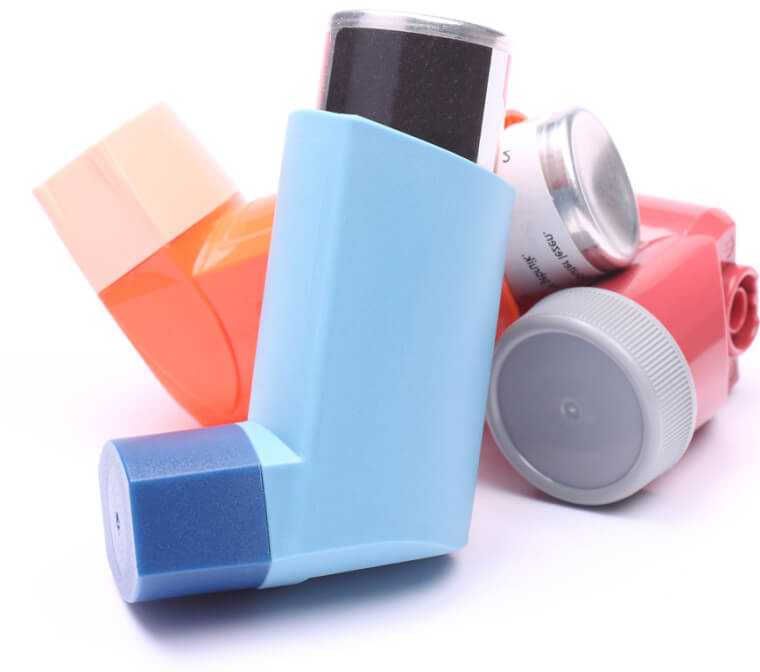Summer solutions for managing asthma and COPD
Navigating life with asthma or chronic obstructive pulmonary disease (COPD) can be challenging, especially when summer is in full swing. So if the promise of warm weather and spending more time outside brings with it a sense of dread, don’t panic. By identifying your triggers and knowing how to manage them during the summer months, even those with the most sensitive lungs can enjoy the hottest days of the year.

Share on
Heat, humidity and pollution
There are many different triggers for asthma attacks and COPD exacerbations but, when it comes to the summer season, the triple threat of heat, humidity and pollution are often the worst culprits. Just like cold air can aggravate your airways, so can hot weather, causing them to narrow and tighten. This can result in shortness of breath, coughing and wheezing, and increasing the likelihood of an asthma attack or COPD flare-up. Humidity also raises levels of dust mites, mould and ground-level ozone in the air, which can be especially problematic for people with allergic asthma or COPD. Add to that a rise in air pollution when the weather is hot and humid and it’s no wonder that the summer months can be a tricky time for those with asthma or COPD.1-6
How to cope
Plan ahead
If you know that hot weather conditions make your symptoms worse, keep a close eye on the weather and pollution forecasts in your area so that you’re prepared, especially if you plan to spend time outside. It’s a good idea to stay inside during extreme heat or on high pollution days, but if you have to go outside, wear a face mask to filter out airborne irritants. Smoke from barbecues also contains pollutants, so bear this in mind if you’re enjoying a garden party. Limit your exposure to smoke and remember to shut doors and windows to curb how much gets into your home.1-3, 7
Stick to your routine
Follow your daily preventer routine so that you can cope better with warm weather and pollution triggers. Always carry your reliever inhaler with you to quickly deal with any symptoms if they arise.2
Use an air purifier
As particles in the air can irritate sensitive airways, try an air purifier in your house to help reduce pollutants.4
Keep cool
Dehydration can make you breathe faster, adding to the risk of a flare-up, so staying cool and hydrated is crucial for controlling asthma and COPD symptoms during warm weather. Spend regular time indoors to cool down if you’ve been outside in the sun and schedule outdoor activities – particularly exercise – in the early morning or evening when the temperature is more bearable and the air quality is better.1

Pollen
High levels of tree, grass or weed pollen at this time of year often mean that people with asthma, particularly those suffering from allergic asthma, and COPD find that their symptoms get worse. With hay fever season starting as early as March and continuing to September, the prolonged risk of asthma attacks and COPD exacerbations is high, so it’s important to manage hay fever if it’s a trigger for you.1, 8, 9
How to cope
Take hay fever medication early
If you have hay fever, using a steroid nasal spray regularly alongside non-drowsy antihistamines when needed can really assist in controlling allergy triggers. But don’t wait until your symptoms have taken hold – start using them before you’re normally affected so that the medication has time to build up in your bloodstream. You should start using a steroid nasal spray up to two weeks before your hay fever season normally begins and start taking antihistamines up to four weeks beforehand.8, 10, 11
Get familiar with forecasts
Make a habit of checking your local pollen forecast and weather reports before you leave the house. If the pollen count is high, or heavy winds or a thunderstorm are on the cards, you may need to change plans for outside activities and stay inside. To work out which pollen triggers your hay fever and when it’s usually released, keep a diary documenting when your symptoms are worse and look them up on an online pollen calendar. This will also help you to know when it’s best to start taking your allergy medication.1, 2, 8
Allergy-proof your home
Reduce the amount of pollen from getting inside by closing windows and showering and changing clothes after being outdoors. Staying on top of household chores, like dusting (using a damp cloth) and vacuuming, will also reduce levels of pollen and other common lung irritants, such as mould spores, dust mites and pet dander, in the air. To avoid a flare-up while cleaning, try wearing a face mask.9-13
Avoid high pollen times
Pollen counts are at their highest during the early morning and early evening. As well as limiting outdoor activity during this time of day, try to plan outings on days when the pollen count is lower to reduce your allergy symptoms.1, 11

Swimming pools
Swimming is often recommended as good exercise for those with asthma or COPD as it can improve fitness and increase wellbeing. But just like household cleaning products, the chlorine added to pools for water safety can irritate the airways and lead to breathing difficulties and asthma attacks. If you find that chlorine is a trigger, limiting your exposure, alongside an up-to-date prevention routine, can mean you don’t have to miss out on pool time.14
How to cope
Shower first
The hygiene habits of swimmers are vital when it comes to maintaining good water conditions, so do your part by showering before stepping into the pool.14
Use your nose
If you are aware of a strong chemical smell after being in the pool for more than three minutes, do not spend long in the water.14
Remember your inhaler
Consider using your reliever inhaler 10 minutes before starting your swim and keep it beside the pool in case symptoms come on. But be sensible – avoid swimming on days when your asthma symptoms are troubling, or if other triggers are high. If swimming still seems to make your condition worse, see your GP as it may be a sign that your current treatment plan needs reviewing.14
AER-IE-00015 | March 2022
1. BLF. Looking after your lungs in hot weather. 2021. Available at: https://www.blf.org.uk/support-for-you/hot-weather (accessed March 2022).
2. Asthma UK. Weather. 2020. Available at: https://www.asthma.org.uk/advice/triggers/weather/ (accessed March 2022).
3. NHS. Living with chronic obstructive pulmonary disease (COPD). 2019. Available at: https://www.nhs.uk/conditions/chronic-obstructive-pulmonary-disease-copd/living-with/ (accessed March 2022).
4. Asthma UK. Indoor asthma triggers. 2020. Available at: https://www.asthma.org.uk/advice/triggers/indoor-environment/ (accessed March 2022).
5. NICE. Asthma: diagnosis, monitoring and chronic asthma management. NG80. Published 2017, updated 2021. Available at: https://www.nice.org.uk/guidance/ng80 (accessed March 2022).
6. Asthma and Allergy Foundation of America. 3 Ways humidity affects asthma. 2018. Available at: https://community.aafa.org/blog/3-ways-humidity-affects-asthma (accessed March 2022).
7. Asthma UK. Air pollution and asthma. 2020. Available at: https://www.asthma.org.uk/advice/triggers/pollution/ (accessed March 2022).
8. Asthma UK. Pollen, hay fever and asthma. 2020. Available at: https://www.asthma.org.uk/advice/triggers/pollen/ (accessed March 2022).
9. NHS. Hay fever. 2020. Available at: https://www.nhs.uk/conditions/hay-fever/ (accessed March 2022).
10. Asthma UK. Hay fever treatments. 2020. Available at: https://www.asthma.org.uk/advice/inhalers-medicines-treatments/other/hay-fever/ (accessed March 2022).
11. NICE. CKS. Allergic rhinitis: Scenario: management. 2021. Available at: https://cks.nice.org.uk/topics/allergic-rhinitis/management/management/ (accessed March 2022).
12. Asthma UK. Dust mites. 2020. Available at: https://www.asthma.org.uk/advice/triggers/dust-mites/ (accessed March 2022).
13. Wilson JM, Platts-Mills TAE. Home environmental interventions for house dust mite. J Allergy Clin Immunol Pract 2018; 6: 1-7. https://pubmed.ncbi.nlm.nih.gov/29310755/
14. Swim England. Asthma and swimming. Available at: https://www.swimming.org/justswim/asthma-and-swimming/ (accessed March 2022).

